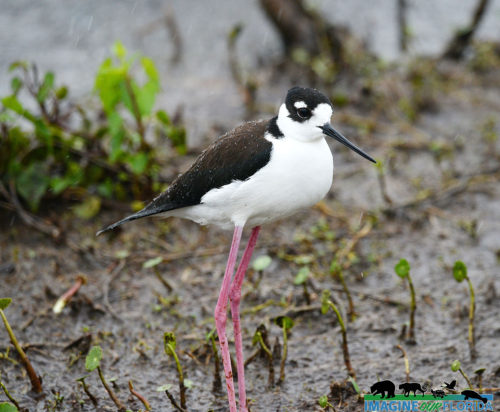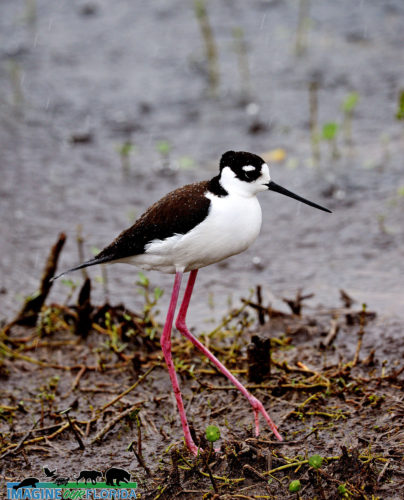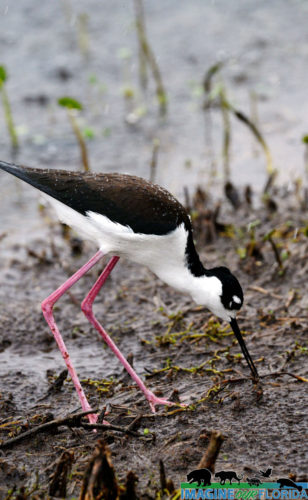Black-necked stilts, Himantopus mexicanus, are often seen wading in shallow water in search of food such as small crustaceans, amphibians, and small fish. They also enjoy larva, dragonflies, and beetles as well as a few plants and seeds. Look for these unmistakable birds with long, pink legs in wetlands, flooded fields, shallow lakes and ponds, and saltmarshes.
The female chooses the male for mating and together they select a nest site and build the nest. Black-necked stilt nests are located on tiny islands, on floating masses of vegetation, or on the ground near the water. One will dig a hole with its feet and body. A lining of grasses, shells, stones, and other materials are added for 2 – 5 eggs. The couple will both incubate the eggs for nearly a month and raise the chicks until they are ready to be on their own in about a month after hatching.
When Black-necked stilts feel threatened by humans or other animals they will perform a “Popcorn Display.” A group of them will join together and jump up and down while flapping their wings and making loud sounds. They may also use a distraction tactic to lure predators away from their nests.
These beautiful birds face human threats of pesticide run-off and habitat loss. When birdwatching, stay far enough away so you do not disturb them.
Photo credit: Dan Kon



